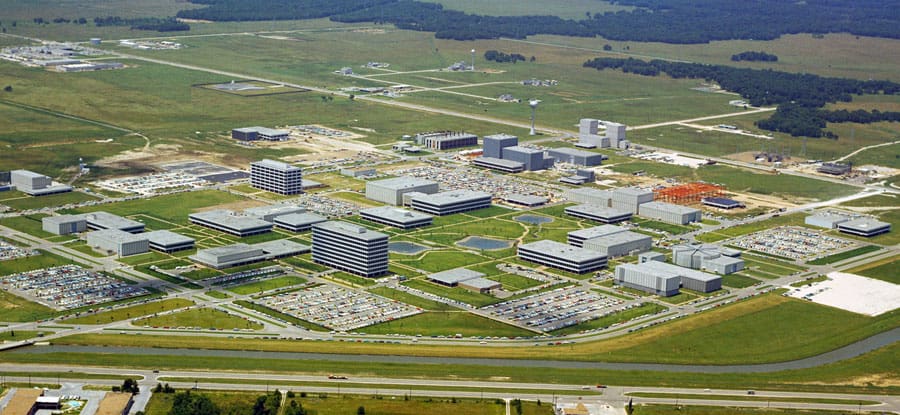Houston has played a pivotal role in the American space program, particularly through the Apollo missions that captivated the world. Home to NASA’s Johnson Space Center, Houston became synonymous with space exploration and human achievement. This article delves into the profound impact Houston had on the Apollo missions, the technological breakthroughs, and the city’s continued role in space innovation.
Early Foundations: Why Houston?
Houston’s connection to space exploration began in the early 1960s when NASA selected the city to house its Manned Spacecraft Center, later renamed the Johnson Space Center. But why Houston? Factors like the availability of land, proximity to the Gulf of Mexico, and political support played a key role. The strategic location also placed Houston in a position to support the logistical needs of the space program, with easy access to military bases, manufacturing centers, and universities.

The Rise of the Johnson Space Center
The Johnson Space Center (JSC) became a central hub for space exploration. With facilities designed to train astronauts and develop spacecraft, the JSC was crucial for the Apollo missions. Here, Houston grew into the “Space City“, symbolizing technological progress and human ingenuity. The Center facilitated the training of astronauts, testing of equipment, and simulation of the mission’s complexities, proving instrumental to the success of America’s journey to the moon.

Apollo 11: A Historic Triumph
The Apollo 11 mission in 1969 became one of the most iconic moments in history, and Houston was at the heart of it. As Neil Armstrong took his first steps on the moon, the world heard the iconic words, “Houston, Tranquility Base here. The Eagle has landed”. From Mission Control at the Johnson Space Center, engineers and astronauts worked closely to manage the challenges of the mission, ensuring its ultimate success.
Houston’s role in the Apollo program wasn’t limited to technical support. The city became a symbol of the United States’ ambition to reach beyond our planet. The Johnson Space Center was where critical decisions were made, where human ingenuity was put to the test, and where dreams of space travel became reality.

A Closer Look at Mission Control
Mission Control, based in Houston, became a nerve center for the Apollo missions. It was here that engineers monitored every aspect of the mission – from launch to landing – and managed real-time communication between astronauts and Earth. The famous phrase, “Houston, we have a problem“, during Apollo 13 underscored how central the city was in overcoming challenges during space missions. Mission Control’s ability to address problems in real-time was vital in saving lives and ensuring the success of these missions.
Technological Advances Born from the Apollo Program
The Apollo missions were responsible for many technological advancements that extended far beyond space exploration. Houston’s contributions to these developments were substantial. Technologies developed in Houston have been adapted for use in everyday life, from advancements in computers to innovations in materials and engineering practices.
Collaboration with Universities and Industry
Houston’s strong network of universities and industries fostered collaboration that drove innovation during the Apollo era. Universities like Rice played an important role in researching and developing technologies that would support NASA’s efforts. Moreover, local industries contributed to the manufacturing and supply chains necessary to build spacecraft and support systems for the missions.
Houston’s Enduring Legacy in Space Exploration
Even after the conclusion of the Apollo program, Houston’s legacy in space exploration continues. The city remains a key player in NASA’s current and future missions, including ongoing projects such as the Artemis program, which aims to return humans to the moon and explore Mars. Houston’s Johnson Space Center is still at the heart of astronaut training and mission planning, continuing its tradition of innovation and exploration.
Apollo’s Cultural Impact on Houston
Beyond technological advances, the Apollo missions had a profound cultural impact on Houston. The city embraced its identity as “Space City”, with everything from sports teams to educational institutions reflecting its space-related pride. The legacy of Apollo lives on in Houston’s space museums, educational programs, and the sense of curiosity and exploration that continues to drive its culture.
A City Grounded in Space Exploration
Houston’s involvement in the Apollo missions elevated it to a global stage, making it a key player in one of humanity’s greatest achievements. The city’s role in space exploration continues to evolve, ensuring that Houston remains synonymous with innovation, discovery, and the enduring quest to explore the unknown. As the space industry grows and new missions are planned, Houston’s pivotal contributions will continue to shape our understanding of space and humanity’s place within it.